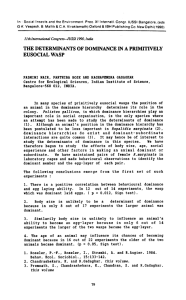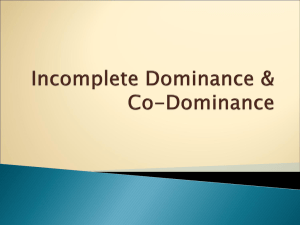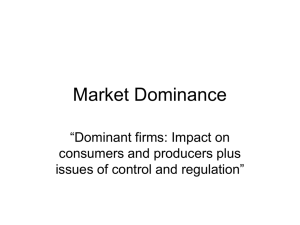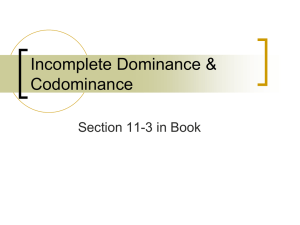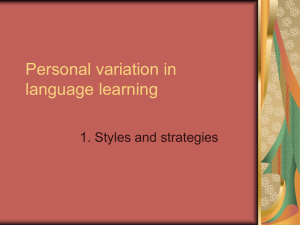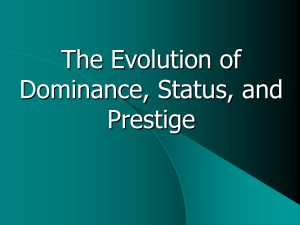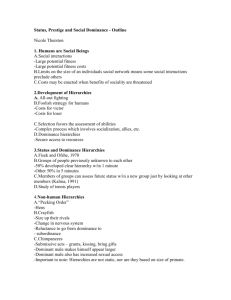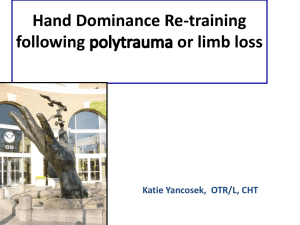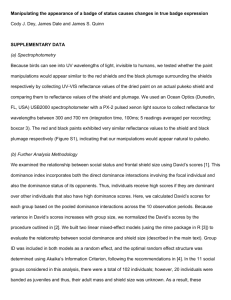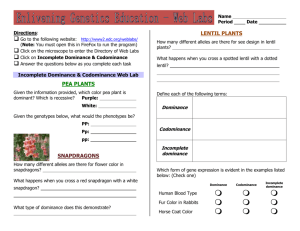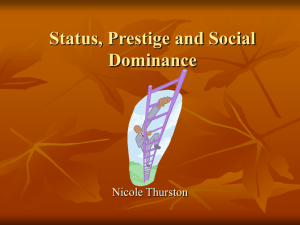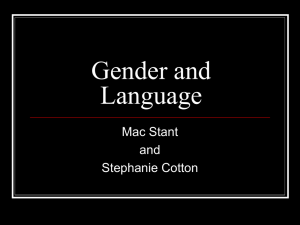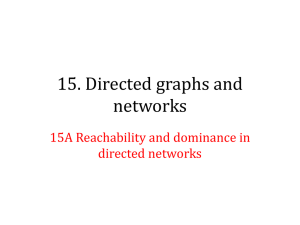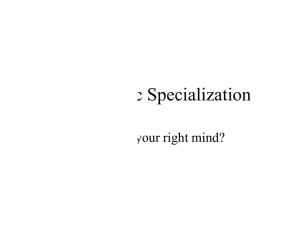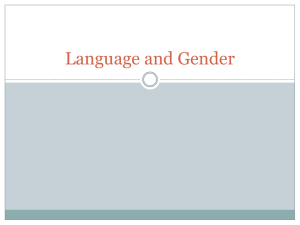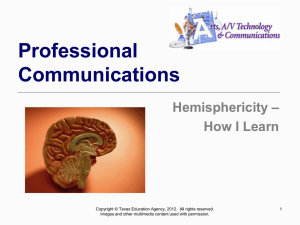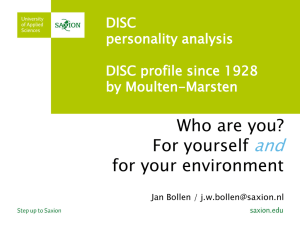File
advertisement
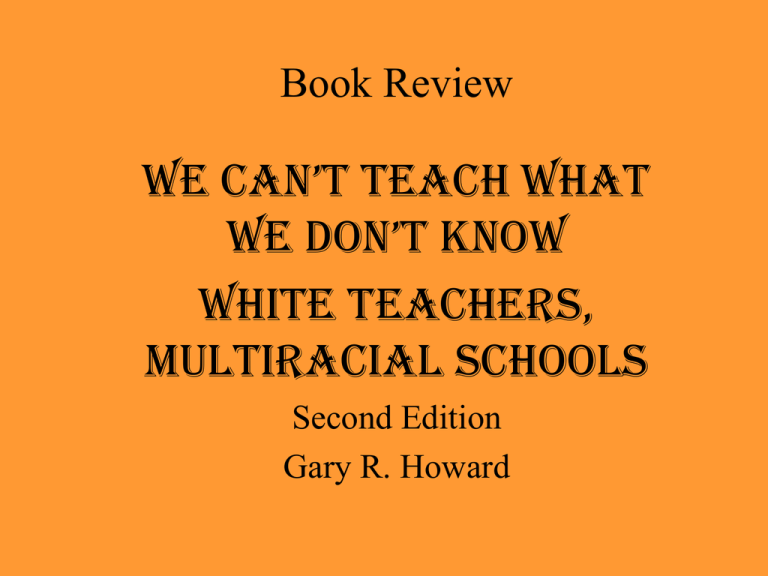
Book Review We Can’t teaCh What We Don’t KnoW White Teachers, Multiracial Schools Second Edition Gary R. Howard Gary R. Howard Chapter 1 White Man Dancing: A Story of Personal Transformation About the Author, Gary R. Howard • Born in a small rural town near Seattle, Washington • First contact with a person of color at the age of 18, senior year of high school. • Went on a double date with a classmate, his AfricanAmerican girlfriend and her friend • Attended Yale Universityafter graduating high school • While attending Yale, worked with inter city Black and Hispanic Children at the local YMCA Baptism By Fire • Howard attended Yale during the 1960’s • He and his wife moved to an area of New Haven named “The Hill” • A very impoverished neighborhood that during the 60’s was a location of massive racial riots and burnings • It was here that Gary Howard found his calling to fight racism and promote cultural awareness Chapter 2 White Dominance and the Weight of the West • “The Enemy is dominance itself, not White people.” • Teachers have a responsibility to our students to assure that we and other educators remain open to ever deeper levels of awareness of dominance. • “If our examination and understanding of the root causes of social inequality are too shallow, then our approach to corrective action will necessarily be superficial and ineffective” (page 30) Why does Social Dominance Exist? 1. 2. 3. 4. Minimal Group Paradigm Social Positionality Social Dominance Theory Privilege and Penalty Minimal Group Paradigm • Suggests that human beings tend to demonstrate discriminatory in-group and out-group dynamics even when there is extremely limited basis for drawing distinctions between members of the groups. • Two Lessons 1.People tend to draw distinctions between themselves as individuals and groups, even if the distinctions are essentially meaningless in a larger context 2. Having drawn these distinctions we then ascribe values of superiority and inferiority to the various in-groups and out-groups we have created Social Positionality • Subjective- how I see myself and how others see me. • Objective- relates to my social position in terms of more quantitative and observable measures, such as income, education level, or job title. • From a non-white point-of-view, both subjectively and objectively Whites have been collectively allocated disproportionate amounts of power, authority, wealth, control, and dominance. • An individual white person may not feel dominant or see themselves belonging to a collective group defined by Whiteness. Social Dominance Theory Four Basic Assumptions 1. 2. 3. 4. Human social systems are predisposed to form social hierarchies, with hegemonic groups at the top and negative reference at the bottom. Hegemonic groups tend to be disproportionately male Most forms of social oppression, such as racism, sexism, and classism, can be viewed as manifestations of group-based social hierarchy. Social hierarchy is a survival strategy that has been selected by many species of primates, including Homo sapiens. White educators ought to understand how our inherited hegemonic position continues to influence the educational process today, because we should be committed to equitable opportunities and outcomes for all of our students. Page 35 Privilege and Penalty • Social dominance will cause privileges to flow to certain groups if they are earned or not. • Penalties, punishments, and inequities flow to other groups through no fault of their own other than their group membership. Example TV program Methodologies of Dominance • • • • • • • Disease Warfare Land Theft Religion Missionaries and Bureaucrats Education Alienation and Alcohol Chapter 3 Decoding the Dominance Paradigm Three major processes that function together as the dynamics of dominance 1.The Assumption of Rightness 2.The Luxury of Ignorance 3.The Legacy of Privilege The Assumption of Rightness • Hegemonic groups do not consider their beliefs, attitudes, and actions to be determined by cultural conditioning or the influences of group membership • Many Whites don't even think of themselves as having culture; we’re simply “right”. Dominate groups don’t hold “perspectives,” they hold “Truth” The Luxury of Ignorance • Assumption of rightness is reinforced by the fact that dominant groups tend to know very little about the “other” groups • Dominant groups can function without knowledge or interaction with those people that are not part of the dominant group. • This leads to the projecting false perceptions and assumptions as truths. Example- Jesus and English The Legacy of Privilege • • • • • “The Real Americans” “forever foreign” syndrome Cheap food The rich get richer and the poor get poorer “Voice” Dominant groups have the power to control public information and education Chapter 4 White Educators and the River of Change White Teachers and the Healing Response 1. Honesty 2. Empathy 3. Advocacy 4. Action Chapter 5 Mapping the Journey of White Identity Development Stages of White Identity Development 1. Contact 2. Disintegration 3. Reintegration 4. Pseudo-independence 5. Immersion / emersion 6. Autonomy Chapter 6 Ways of Being White: A Practitioner’s Approach to Multicultural Growth White Identity Orientations 1. Fundamentalist White Identity 2. Integrationist White Identity 3. Transformationist White Identity Chapter 7 White Teachers and School Reform: Toward a Transformationist Pedagogy • What Transformationist Teachers Know 1. Race Matters 2. Change Begins With Us 3. Beliefs Determine Outcomes 4. Teaching Is a Calling, Not Just a Job

